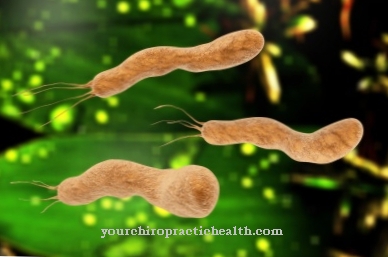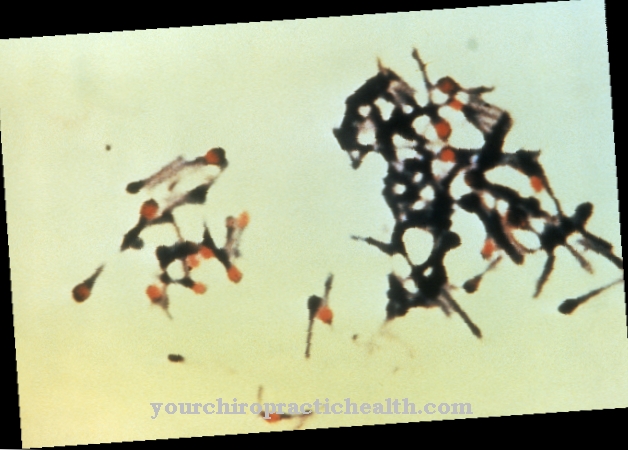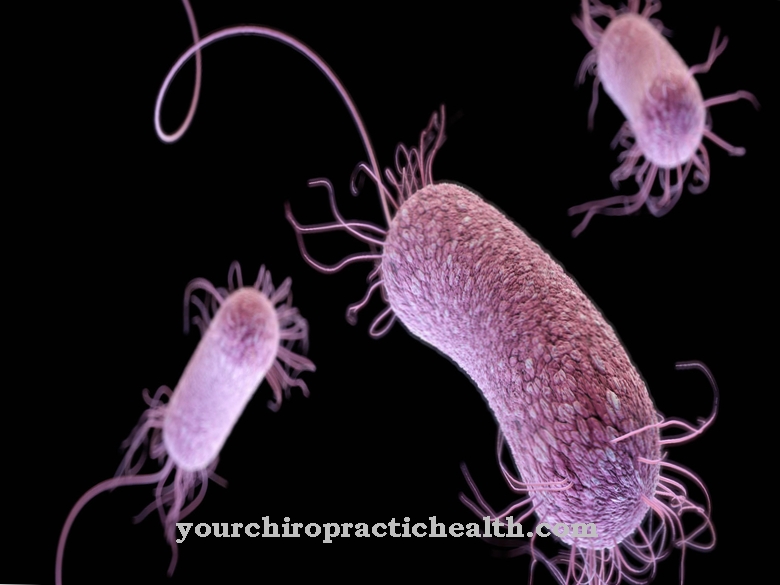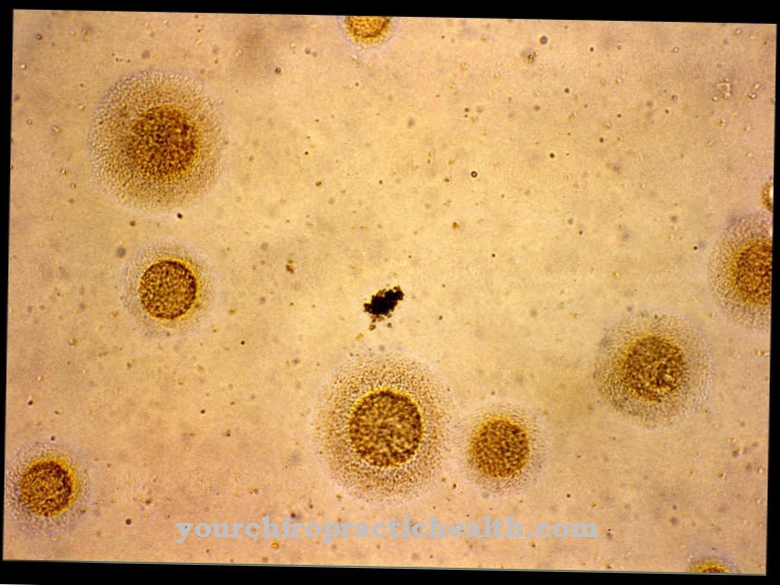Proteus is the name for a type of bacteria. The microorganisms occur in the intestines of humans and animals and can trigger diseases.
What are Proteus Bacteria?
A gram-negative bacterial genus is summarized under the name Proteus. The name Proteus goes back to the ancient Greek sea god Proteus. The poet Homer described this in his Odyssey as externally extremely versatile. Proteus bacteria come from the enterobacteria family (Enterobacteriaceae). They are equipped with flagella around their cell and are diverse. The term Proteus comes from the German pathologist and bacteriologist Gustav Hauser (1856-1935), who became famous for his discovery of the Proteus mirabilis bacterial species.
Proteus mirabilis is considered to be the medically most important species of Proteus. Other members of this genus include Proteus penneri, Proteus vulgaris, Proteus hauseri and Proteus myxofaciens. Proteus myxofaciens differs significantly in its genetics from the rest of the genera. As a pathogen, this species is the only one of its kind that does not play a role.
Although Proteus morganii, Proteus rettgerti and Proteus inconstans also bear the name Proteus, they are no longer included in the genus Proteus due to new DNA analyzes. Instead, they now belong to the genera Providencia and Morganella.
Occurrence, Distribution & Properties
The Proteus bacteria, which are considered undemanding, are mostly found as saprophytes in bodies of water and soils that contain organic material. This can be the excretion of living beings or dead biomass. In addition, the Proteus bacteria are found in the intestines of humans and animals. The microorganisms in nature are important in putrefaction processes and the aerobic decomposition of proteins.
The cells of the Proteus bacteria are shaped like rods. They have a diameter between 0.4 and 0.8 µm. The length of the microorganisms is considered to be variable. The Proteus bacteria are also extremely mobile due to their perithric flagellation. The germs do not need oxygen for their metabolism. The energy metabolism of the bacteria is oxidative and fermentative. The partly parasitic microorganisms obtain the energy from chemical reactions of substances in their environment. They mostly use sugar as an energy source. In addition, the members of the genus Proteus are catalase-positive and oxidase-negative. They also have the ability to reduce nitrate to nitrite.
There is a greater similarity between the Proteus genus and the bacterial genera Morganella and Providencia. This is how all three species make phenylalanine deaminase. In addition, none of the three genera are able to metabolize malonate or produce arginine decarboxylase. In addition, they cannot form acid during the metabolism of L-arabinose, D-sorbitol and dulcitol.
Other characteristic properties of the genus Proteus are the formation of hydrogen sulfide from amino acids containing sulfur, the liquefaction of gelatine and the breakdown of corn oil fats and urea.
Their swarming behavior is also typical of the Proteus bacteria. So-called swarm cells, which are densely flagellated cells, form on gel culture media. On the gel surface, they move on a thin liquid layer that is formed by syneresis. If the bacterial colony is still quite narrow at the beginning, it can spread quickly over the surface of the gel in the further course. Since the swarm movements alternate with local multiplication, the gel surface is ultimately covered by an extensive Proteus colony.
Due to their swarming behavior, the Proteus bacteria can usually be detected without any problems. In addition, they break down glucose with the formation of acid. In the case of a serological test, it is possible to differentiate between several antigens, whereby the bacteria can be divided into serotypes.
Illnesses & ailments
The Proteus bacteria are among the opportunistic pathogens. Within the intestine, they have no disease-causing significance and adapt to the intestinal flora. However, if the germ can settle in another organ, there is a risk of infection. Some indole-positive Proteus strains are also hospital germs and cause infections, especially in people with a reduced immune system.
Urinary tract infections such as cystitis are among the most common diseases caused by Proteus bacteria. On the other hand, infections in other organs, such as peritonitis, infections of the biliary tract, gastrointestinal flu (gastroenteritis), inflammation of the prostate gland (prostatitis), kidney pelvic inflammation, empyema (encapsulated pus accumulation) or inflammation of the skin (meningitis). Sometimes severe courses such as blood poisoning (sepsis) are also possible.
Diseases caused by Proteus bacteria are usually treated with antibiotics. Most Proteus species can be successfully treated with broad-spectrum cephalosporins, which come from the second and third generation, and with quinolones. If the urinary tract infection is uncomplicated, cotrimoxazole is also considered helpful. In most cases, the species Proteus mirabilis causes the infectious diseases. Cefazolin and ampicillin are promising against this bacterium.
Cephalosporins of the first and second generation and aminopenicillins are not considered to be effective against Proteus vulgaris, as the bacterium is resistant to these antibiotics. In contrast, other antibiotics, such as carbapaneme or cefotaxime and beta-lactamase inhibitors, have a positive effect.
All Proteus species are naturally resistant to antibiotic agents such as tetracyclines, nitrofurantoin, colistin and tigecycline. However, the resistance of the Proteus bacteria fluctuates over time and from region to region, so that it can be useful to make an antibiogram.




























